Sol
Sol is a stable G-class main-sequence yellow dwarf star classified in the spectral class of G2. It more than 4.5 billion years old, and has eight planets in orbit around it, as well as an asteroid belt, a rocky dwarf planet and a cloud of icy comets. One of the planets in orbit around Sol is Earth, where Humans first evolved. Most standardized systems of cosmic measurement and timekeeping are based upon Sol and its planet Earth. Earth and three other planets in orbit around Sol are rocky and rich in resources, and the remaining four planets are gas giants.
Planets and Major Bodies in Orbit
Mercury (Sol I)
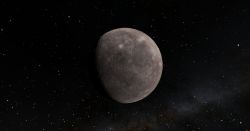
Mercury is the nearest planet in orbit around Sol. It orbits Sol at a periapsis of 0.38 AU and an apoapsis of 0.39 AU. It completes one full revolution around its parent star every 88 standard days, and has a day that is a little more than 58.6 standard days long. It is a small terrestrial planet, being smaller than Earth’s moon. It’s surface is pitted with craters from eons of meteor impacts. The planet has a very thin exosphere composed of mainly oxygen, though it it much too thin to sustain any form of life. Mercury experiences wild variation in terms of surface temperature, with its daytime side reaching temperatures of 430 °C, and the night side dropping to the range of -180 °C. The planet faces constant bombardment from small meteors and solar wind, with no atmosphere thick enough to prevent it. No attempts were ever made to colonize the planet due to its utter lack of resources and extreme conditions. Civilian travel is not advised.
Venus (Sol II)
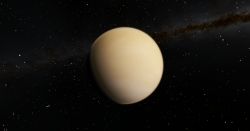
Venus is the second terrestrial planet in the Sol system. It orbits Sol at an average distance of 0.72 AU. A Venusian year lasts 225 standard days, while a Venusian day is longer, at 243 standard days. Venus spins retrograde when compared to the other planets in the Sol system, causing the sun to rise in the west and set in the east in its sky. Venus has an extremely thick and toxic atmosphere, composed of large amounts of carbon dioxide and nitrogen. The rain that falls upon the surface is composed of sulfuric acid. Because of how thick the planet’s atmosphere is, a runaway greenhouse effect has made the planet uninhabitable to all life. The atmosphere is so thick that it exerts massive amounts of pressure on the surface, which has crushed all but the most structurally reinforced of scientific equipment sent to study the planet, while the rest was destroyed by caustic acid rain. The planet hosts massive amounts of volcanic activity, which spew more toxic gases into the atmosphere. Almost no sunlight reaches the surface of the planet, yet temperatures exceed 480 °C. No attempt has ever been made to colonize the planet due to extreme conditions. Civilian travel is not advised.
Earth (Sol III)
Earth is the third planet out from Sol. Today, Earth is considered little more than an irrelevant backwater by a majority of humanity. Earth was originally a Garden world, harboring millions of unique species of flora and fauna. It possessed extremely diverse ecosystems, with huge deserts, sprawling tundra, massive mountain ranges, rolling grasslands, and thick swaths of tropical rain forest. 71% of the Earth’s surface was covered in salt water, although massive lakes of fresh water within continental areas. It was a temperate world before it was devastated by Kinetic Kill Vehicles (KKVs). In the modern age, Earth is mostly uninhabitable, with only a few areas having been terraformed and shielded from the rest of the irradiated geosphere. Earth bore witness tens of thousands of years of human history and development, from the harnessing of fire and simple tools to humanity's rapid colonization of the stars.
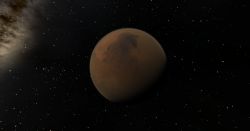
As the planet entered the 20th and 21st centuries, it's ecology suffered as a result of haphazard development, industrial accidents and population booms. As natural resources dried up, humanity was forced into the stars. Overtime, Earth came to consume a massive amount of extrasolar resources in order to support it's billion of citizens.
Earth's demise came during the second Sol Alliance civil war, when KKVs were fired on the planet is retaliation of attacks against the Inner colonies. In an instant, entire landmasses were leveled, flora and fauna were vaporized and billions of people were obliterated.
Today, Earth is home to between 750 million and a billion humans, living in advanced 'preservation domes', underground disaster shelters and on the few surfaces still able to support some degree of life. The planet suffers from Kepler's Syndrome, making orbital development nearly impossible. The Alliance maintains a blockade around the planet, regulating a steady stream of supplies and aid to the planet. The blockade maintains an emigration quota, allowing only 10,000 individuals a year to legally leave the planet. Travel to the planet, outside of military channels is tightly controlled, but a lucrative (and dangerous) business of smuggling has been steadily growing.
Earth has one moon, Luna, which managed to avoid most of the damage dealt to Earth.
Luna
Luna is the moon of Earth. It is tidally locked to its parent and makes a complete revolution every 28 standard days. It formed when a rogue planetoid collided with Earth during the early stages of its formation. The moon came together from the resultant orbital debris. Luna was the first target of spacefaring humans as they pierced the outer layers of the atmosphere. It was largely ignored until the age of FTL travel and colonization, when small colonies were established, mostly as refueling and launching posts for re-entry craft. However, after the thermonuclear annihilation of Earth, it became the base for many salvaging operations intent on harvesting and repurposing technology and precious materials left on the surface of the planet in highly irradiated areas. Most of the population living on Luna are part of the salvaging operation, although there is an extensive network of biodomed cities. The total population on Luna is registered at 3.6 million lunarside, and 200,000 in orbit in various artificial satellites.
Mars (Sol IV)
Mars is the fourth planet out from Sol. It orbits Sol at approximately 1.52 AU. A Martian day is only slightly longer than a standard day at 25 standard hours, but the Martian year is 687 standard days long. It is the outermost terrestrial planet in the Sol system. It is known as the Red Planet, because the iron-rich dust that covers most of the planet’s surface gives it a reddish tinge that was visible to the naked eyes of astronomers on Earth in ancient times. Mars has a relatively thin atmosphere. Before it was terraformed, it used to be composed mostly of carbon dioxide and nitrogen, but now has a similar composition to a pre-industrial Earth, albeit with a slightly higher oxygen content to counter the thinness of the atmosphere. Mars is approximately half the size of Earth, resulting in it having a much lower amount of gravity, only about 37% of Earth’s gravity. Most of the planet is uninhabitable due to severe weather
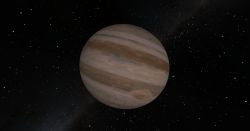
conditions and tectonic activity, and the portions that do allow human habitation are still inhospitable. The planet has two moons, Phobos and Deimos, though they are little more than captured asteroids. Mars was the first planet to be colonized by a spacefaring humanity, but was soon overlooked as more hospitable and promising worlds were discovered in other star systems. The effects of interplanetary warfare have taken their toll on the planet and its population, which was relatively small to begin with. Approximately 10 million people in total inhabit Mars. The planetary capital of Mars is Olympia, but a majority of senior administration faciltiies and personnel reside in orbit on New Concordia station.
The Asteroid Belt
The Asteroid Belt is an area around Sol where thousands of rocky bodies, too small to be called planets or even dwarf planets, orbit. The zone encompasses an area between 2.2 AU and 3.2 AU away from Sol. The asteroids in the belt are rich in precious and semi-precious metals, hydrogen and water. The density of asteroids in the zone is relatively low, which was an important factor in allowing asteroid mining companies to establish footholds. The largest, oldest and most powerful of these asteroid mining companies is the Beltway Mining Company, which has claimed the rights to mine most of the Asteroid Belt. Other fledgeling companies have often been pushed out through either strategic economic maneuvers, intimidation, and sometimes force. Beltway has a main base located on the planetoid Ceres, the largest body in the asteroid belt. Over the years, the planetoid has been hollowed out by intensive mining
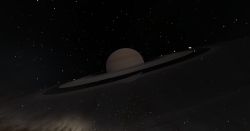
operations, and now serves as a massive complex that the rest of their operations are based out of.
Jupiter (Sol V)
Jupiter is the fifth planet out from Sol. It is the largest gas giant in the system and is actually two times larger than all the other planets of the Solar system combined. It is composed of Helium and Hydrogen in similar ratios as Sol itself, suggesting that Jupiter may have been on the road to becoming a dwarf star, but never achieved the mass to ignite. Jupiter orbits Sol at distance ranging from a periapsis of 4.951 AU to an apoapsis of 5.455 AU. A Jovian day lasts approximately 10 standard hours, while a Jovian year is almost 11.9 standard years long. Jupiter is known for the multicolored bands and massive storms that are visible on the top of the planet’s atmosphere. The most well-known feature of Jupiter is its Great Red Spot, a massive hurricane many times the size of Earth that has been raging for centuries. Jupiter has more than 67 moons in total, though only the Galilean moons (Europa, Ganymede, Io, Callisto) are home to outposts that serve more as tourist destinations than actual military installations. Jupiter itself is uninhabitable, due to the superdense atmosphere and high gravity crushing anything that even attempts to enter the planet's atmosphere. Jupiter is the second largest source of tourism for the Solar system.
Saturn (Sol VI)
Saturn is the sixth planet of Sol, and the second largest gas giant in the system. It is known for the spectacular systems of rings that encircle the planet. It is the second largest gas giant
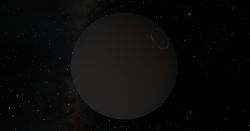
in the system, with a composition similar to Jupiter. It orbits Sol at a distance ranging from 9.023 AU at the periapsis, to 10.050 AU at the apoapsis. A day on Saturn lasts approximately 10.7 standard hours, while it takes almost 29 standard years for it to complete one full revolution around Sol. Saturn has more than 62 moons, but the only one that is inhabited is the largest one, Titan. Titan is home to a small outpost and colony that houses a registered population of 2,348. It also serves as a tourist destination. With its hundreds of brilliant rings, Saturn is the largest source of tourism for the Solar system.
Uranus (Sol VII)
Uranus is the seventh planet of Sol. It is an ice giant that is tilted on its side so that its equator is at a right angle to its orbit. A day on Uranus lasts approximately 17 standard hours, while its orbital period is approximately 84 standard years long. It orbits Sol with a perapsis of 18.28 AU and an apoapsis of 20.10 AU. The planet has 27 moons, although none of them are inhabited. The planet’s striking blue color is attributed to the high amounts of methane present in the atmosphere, as well as the methane ice crystals and ammonia that makes up the slushy “mantle” of the planet. It has several faint rings around it.
Neptune (Sol VIII)
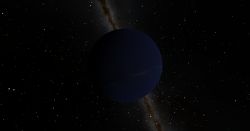
Neptune is the eighth planet of Sol, and the sister ice giant to Uranus. It has a very similar composition, with high amounts of methane present in the atmosphere. Large amounts of water are also present in the planet’s mantle. A Neptunian day lasts approximately 16 standard hours, while a Neptunian year is 165 standard years long. It orbits Sol at a distance ranging from 29.81 AU, to 30.33 AU. Neptune has 17 moons. Triton, the largest, had an active outpost on it at one point in history, but it was abandoned several hundred years ago.
The Kuiper Belt
The Kuiper Belt is the region beyond the orbit of Neptune that is home to tens of thousands of icy bodies, and potentially hundreds of thousands more. The Kuiper Belt encompasses an area from 30 AU to 55 AU away from Sol. Of the icy bodies present in the belt, Pluto and Eris are the most well known. The icy bodies here are rich in hydrogen and water, but lacking in terms of other resources, such as metals. The Kuiper Belt may also be home to up billions of comets too small to be detected.
The Oort Cloud
The Oort Cloud is a spherical area of space that encases the Sol system. It begins where the Kuiper Belt ends, and extends outward until almost 1.5 LY away from Sol. It is estimated that Oort Cloud may contain up to a trillion icy bodies, including planetoids and comets. Unlike the Romanovich Cloud of Tau Ceti, the bodies in the Oort cloud are metal-deficient, making the effort of locating bodies in this region to mine a pointless endeavour.